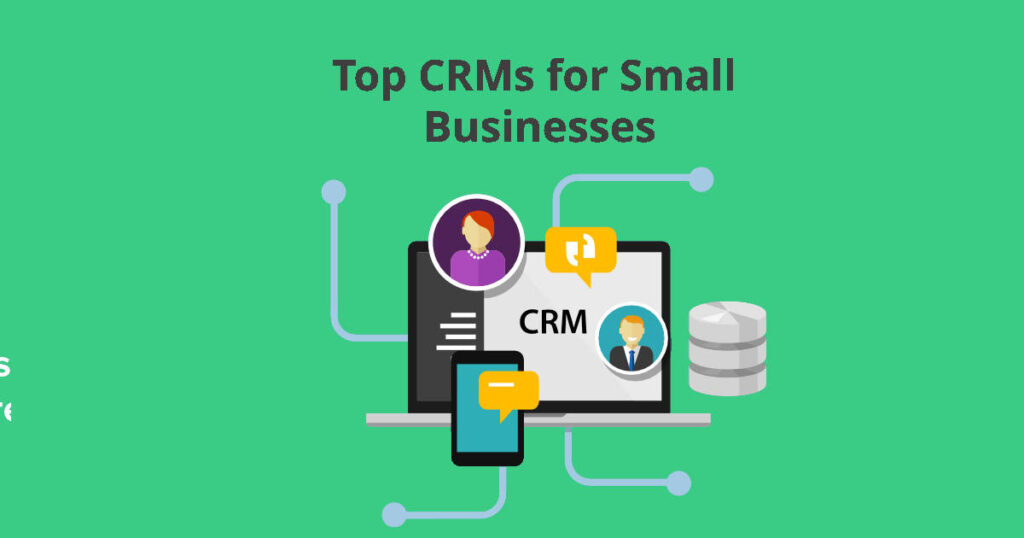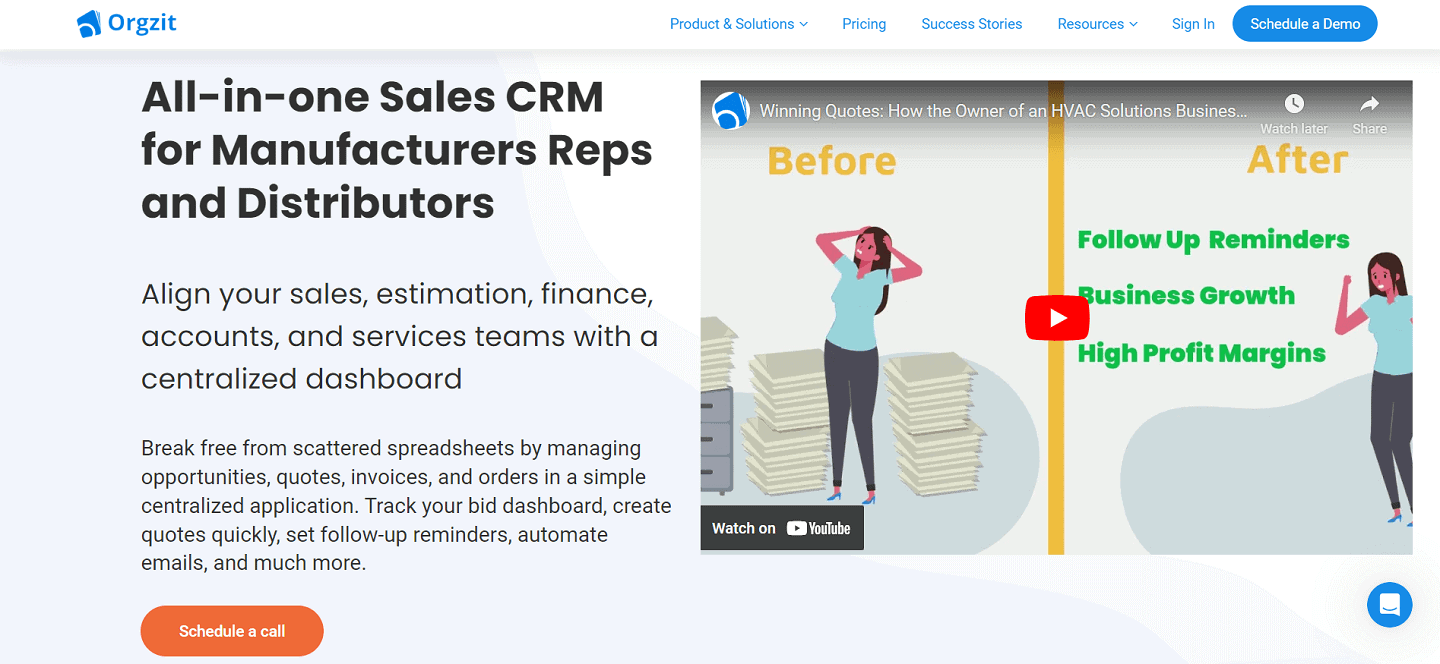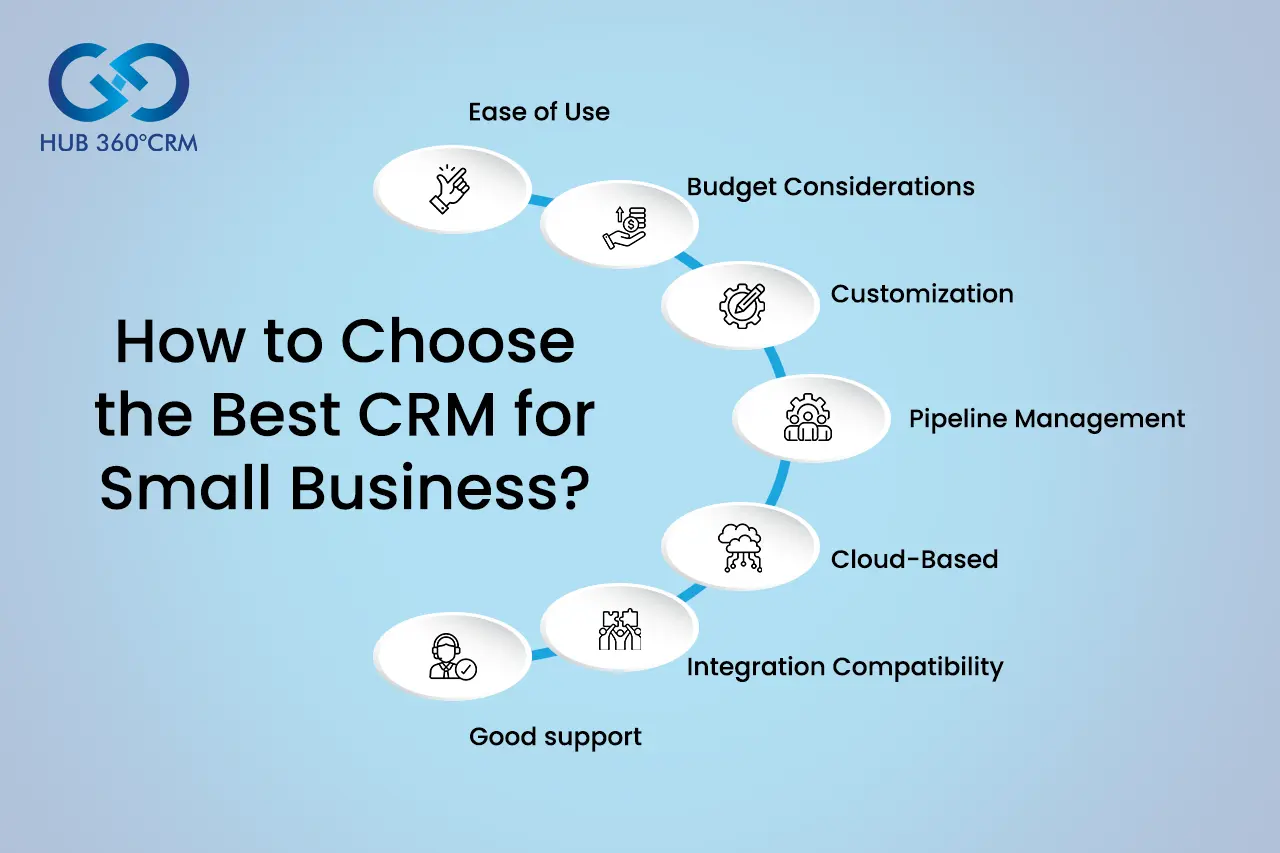
In the dynamic world of small businesses, the pursuit of expansion is a constant endeavor. It’s about more than just increasing revenue; it’s about building a sustainable, thriving enterprise. But navigating this journey can be complex. The challenges are numerous, from managing customer relationships effectively to streamlining internal processes. Fortunately, there’s a powerful ally that can significantly simplify this path: Customer Relationship Management (CRM) software. This comprehensive guide will explore how CRM can be a game-changer for small businesses seeking to expand, providing a detailed look at its benefits, implementation strategies, and best practices.
Understanding the Core: What is CRM?
Before diving into the specifics, let’s establish a solid understanding of what CRM truly entails. CRM, at its core, is a technology that helps businesses manage and analyze customer interactions and data throughout the customer lifecycle. It’s a system designed to improve business relationships with customers, retain customers, and drive sales growth. Think of it as the central nervous system of your business, connecting all customer-related activities in one place.
CRM isn’t just a piece of software; it’s a strategy. It’s about understanding your customers, anticipating their needs, and providing them with exceptional experiences. This strategic approach is crucial for small businesses because, in today’s competitive landscape, customer loyalty is more valuable than ever. Building strong customer relationships can lead to repeat business, positive word-of-mouth referrals, and a significant advantage over competitors.
The Benefits of CRM for Small Business Expansion
The advantages of implementing a CRM system for a small business are numerous and far-reaching. Here are some of the key benefits that directly contribute to expansion:
1. Enhanced Customer Relationship Management
At the heart of any successful business is a strong focus on customer relationships. CRM systems provide a centralized repository for all customer data, including contact information, purchase history, communication logs, and preferences. This comprehensive view allows businesses to:
- Personalize Interactions: Tailor your communication and offers to individual customer needs and preferences, leading to increased engagement and conversions.
- Improve Customer Service: Provide faster and more efficient support by having immediate access to a customer’s history and context.
- Build Customer Loyalty: Foster stronger relationships by demonstrating that you understand and value your customers.
2. Increased Sales and Revenue
CRM systems are powerful sales tools, helping businesses streamline their sales processes and close more deals. Key features that contribute to increased sales include:
- Lead Management: Track leads from initial contact through the sales pipeline, ensuring that no opportunity is missed.
- Sales Automation: Automate repetitive tasks, such as email follow-ups and appointment scheduling, freeing up sales representatives to focus on closing deals.
- Sales Forecasting: Gain insights into future sales trends, enabling better resource allocation and strategic planning.
3. Improved Marketing Effectiveness
CRM systems can significantly enhance marketing efforts by providing valuable customer insights and enabling targeted campaigns. Benefits include:
- Targeted Marketing: Segment your customer base and create highly targeted marketing campaigns based on demographics, purchase history, and other criteria.
- Marketing Automation: Automate marketing tasks, such as email marketing and social media posting, to save time and improve efficiency.
- Campaign Tracking and Analysis: Track the performance of your marketing campaigns and gain insights into what’s working and what’s not.
4. Streamlined Operations and Increased Efficiency
CRM systems help businesses streamline their operations and improve overall efficiency. Key benefits include:
- Centralized Data: Eliminate data silos by centralizing all customer data in one place, making it easier to access and manage.
- Automated Processes: Automate repetitive tasks, such as data entry and report generation, to save time and reduce errors.
- Improved Collaboration: Facilitate better collaboration between departments, such as sales, marketing, and customer service, by providing a shared view of customer information.
5. Data-Driven Decision Making
CRM systems provide valuable data and analytics that can be used to make informed business decisions. Benefits include:
- Performance Tracking: Track key performance indicators (KPIs), such as sales revenue, customer acquisition cost, and customer retention rate.
- Trend Analysis: Identify trends and patterns in customer behavior and sales data.
- Strategic Planning: Use data insights to make informed decisions about product development, marketing strategies, and other business initiatives.
Choosing the Right CRM for Your Small Business
Selecting the right CRM system is a critical decision that can significantly impact your business’s success. Here’s a step-by-step guide to help you choose the best CRM solution for your needs:
1. Define Your Needs and Objectives
Before you start evaluating CRM systems, take the time to clearly define your business needs and objectives. What problems are you trying to solve? What are your goals for implementing a CRM system? Consider the following questions:
- What are your current customer relationship management challenges?
- What specific features do you need in a CRM system?
- What are your sales and marketing goals?
- What is your budget?
- What is your technical expertise?
2. Research CRM Vendors and Solutions
Once you have a clear understanding of your needs, it’s time to research different CRM vendors and solutions. Consider the following factors:
- Features: Does the CRM system offer the features you need, such as lead management, sales automation, and marketing automation?
- Scalability: Can the CRM system scale to accommodate your business growth?
- Ease of Use: Is the CRM system easy to use and navigate?
- Integration: Does the CRM system integrate with your existing business tools, such as email marketing platforms and accounting software?
- Pricing: Is the CRM system affordable for your budget?
- Customer Support: Does the vendor offer good customer support?
3. Consider Cloud-Based vs. On-Premise CRM
There are two main types of CRM systems: cloud-based and on-premise. Cloud-based CRM systems are hosted by the vendor and accessed over the internet, while on-premise CRM systems are installed on your own servers. Consider the following factors when choosing between the two:
- Cost: Cloud-based CRM systems typically have lower upfront costs, while on-premise CRM systems require a significant investment in hardware and software.
- Maintenance: Cloud-based CRM systems are maintained by the vendor, while on-premise CRM systems require you to manage the maintenance and updates.
- Security: Cloud-based CRM systems are generally more secure than on-premise CRM systems, as vendors have dedicated security teams and infrastructure.
- Accessibility: Cloud-based CRM systems can be accessed from anywhere with an internet connection, while on-premise CRM systems are typically only accessible from your office.
4. Evaluate CRM Vendors and Solutions
Once you’ve narrowed down your list of potential CRM vendors, it’s time to evaluate their solutions. Consider the following steps:
- Request Demos: Request demos from each vendor to see the CRM system in action.
- Read Reviews: Read reviews from other businesses to get an idea of the vendor’s reputation and customer satisfaction.
- Get Quotes: Get quotes from each vendor to compare pricing and features.
- Ask Questions: Ask the vendors any questions you have about their CRM system and services.
5. Choose the Right CRM System
Based on your research and evaluation, choose the CRM system that best meets your business needs and budget. Consider the following factors:
- Features: Does the CRM system offer the features you need?
- Ease of Use: Is the CRM system easy to use?
- Scalability: Can the CRM system scale to accommodate your business growth?
- Pricing: Is the CRM system affordable?
- Customer Support: Does the vendor offer good customer support?
Implementing CRM: A Step-by-Step Guide
Implementing a CRM system is a significant undertaking, but it’s a critical step in unlocking its full potential. Here’s a step-by-step guide to help you implement your CRM system successfully:
1. Plan Your Implementation
Before you start implementing your CRM system, take the time to plan your implementation carefully. Consider the following steps:
- Define Your Goals: Clearly define your goals for implementing the CRM system.
- Create a Project Plan: Create a detailed project plan that outlines the steps involved in the implementation process.
- Assign Roles and Responsibilities: Assign roles and responsibilities to team members.
- Set a Timeline: Set a realistic timeline for the implementation process.
2. Data Migration
Migrating your existing customer data to the new CRM system is a critical step. Consider the following steps:
- Clean Your Data: Clean your existing customer data to ensure accuracy and completeness.
- Choose a Data Migration Method: Choose the best data migration method for your needs, such as manual data entry, data import tools, or data migration services.
- Test Your Data Migration: Test your data migration to ensure that all data is migrated correctly.
3. Customize Your CRM System
Customize your CRM system to meet your specific business needs. Consider the following steps:
- Configure Your Settings: Configure your CRM system settings, such as user roles, security settings, and workflow settings.
- Customize Your Fields: Customize your CRM system fields to capture the specific information you need.
- Integrate with Other Systems: Integrate your CRM system with other business systems, such as email marketing platforms and accounting software.
4. Train Your Team
Provide thorough training to your team on how to use the CRM system effectively. Consider the following steps:
- Develop a Training Plan: Develop a training plan that outlines the training content and schedule.
- Provide Training: Provide training to your team on how to use the CRM system.
- Offer Ongoing Support: Offer ongoing support to your team to help them use the CRM system effectively.
5. Monitor and Optimize Your CRM System
Continuously monitor and optimize your CRM system to ensure that it’s meeting your business needs. Consider the following steps:
- Track Key Performance Indicators (KPIs): Track key performance indicators (KPIs), such as sales revenue, customer acquisition cost, and customer retention rate.
- Analyze Your Data: Analyze your data to identify trends and patterns in customer behavior and sales data.
- Make Adjustments: Make adjustments to your CRM system as needed to optimize its performance.
Best Practices for CRM Success
Implementing a CRM system is only the first step. To truly maximize its benefits, it’s essential to follow best practices. Here are some key strategies for CRM success:
1. Focus on Data Quality
The accuracy and completeness of your data are crucial for CRM success. Implement processes to ensure data quality, including:
- Data Entry Standards: Establish clear data entry standards to ensure consistency.
- Data Validation: Use data validation tools to prevent errors.
- Regular Data Cleansing: Regularly cleanse your data to remove duplicates and outdated information.
2. Encourage User Adoption
User adoption is essential for CRM success. Encourage user adoption by:
- Providing Training: Provide thorough training to help users understand the system and its benefits.
- Making it Easy to Use: Choose a user-friendly CRM system and customize it to meet your team’s needs.
- Highlighting the Benefits: Communicate the benefits of using the CRM system to your team.
- Providing Ongoing Support: Offer ongoing support and encouragement to users.
3. Integrate CRM with Other Systems
Integrate your CRM system with other business systems to streamline your operations and improve efficiency. Integrate with systems such as:
- Email Marketing Platforms: Integrate with email marketing platforms to automate email marketing campaigns.
- Accounting Software: Integrate with accounting software to track sales and financial data.
- Social Media Platforms: Integrate with social media platforms to monitor customer engagement and manage social media campaigns.
4. Analyze and Optimize Regularly
Continuously analyze and optimize your CRM system to ensure that it’s meeting your business needs. Consider these steps:
- Track Key Performance Indicators (KPIs): Track key performance indicators (KPIs), such as sales revenue, customer acquisition cost, and customer retention rate.
- Analyze Your Data: Analyze your data to identify trends and patterns in customer behavior and sales data.
- Make Adjustments: Make adjustments to your CRM system as needed to optimize its performance.
5. Prioritize Customer Experience
Ultimately, CRM is about improving the customer experience. Focus on:
- Personalization: Tailor your interactions to individual customer needs and preferences.
- Proactive Communication: Proactively communicate with customers to keep them informed and engaged.
- Exceptional Customer Service: Provide exceptional customer service to build customer loyalty.
Case Studies: CRM in Action for Small Business Growth
To further illustrate the power of CRM, let’s examine a few case studies of how small businesses have leveraged CRM to achieve significant growth:
Case Study 1: Retail Business
A small retail business specializing in handcrafted goods implemented a CRM system to manage customer data and personalize marketing efforts. By segmenting their customer base based on purchase history and preferences, they were able to create highly targeted email campaigns. This resulted in a 25% increase in repeat purchases and a significant boost in overall revenue.
Case Study 2: Consulting Firm
A consulting firm utilized CRM to streamline its sales process and improve lead management. By tracking leads through the sales pipeline and automating follow-up tasks, they were able to close more deals and reduce their sales cycle. This led to a 20% increase in sales and improved efficiency across the sales team.
Case Study 3: Software Startup
A software startup used CRM to improve customer service and build customer loyalty. By providing faster and more efficient support, and by tracking customer feedback, they were able to improve customer satisfaction and reduce churn. This resulted in a 15% increase in customer retention and a positive impact on their brand reputation.
The Future of CRM for Small Businesses
The landscape of CRM is constantly evolving, with new technologies and features emerging regularly. Here are some trends to watch:
- Artificial Intelligence (AI): AI-powered CRM systems are becoming increasingly sophisticated, offering features such as predictive analytics, automated chatbots, and personalized recommendations.
- Mobile CRM: Mobile CRM solutions are becoming more prevalent, allowing businesses to access customer data and manage their CRM system from anywhere.
- Integration with Social Media: CRM systems are increasingly integrating with social media platforms to enable businesses to monitor customer engagement and manage social media campaigns.
- Focus on Customer Experience: The focus on customer experience is becoming even more pronounced, with CRM systems designed to provide personalized and proactive customer service.
Conclusion: Embracing CRM for a Brighter Future
In conclusion, CRM is a powerful tool that can transform small businesses and unlock their potential for expansion. By implementing a well-chosen CRM system, following best practices, and staying ahead of the latest trends, small businesses can build stronger customer relationships, increase sales and revenue, streamline operations, and achieve sustainable growth. Embrace the power of CRM, and watch your small business thrive.
As you embark on your CRM journey, remember that the key to success lies in careful planning, diligent implementation, and a relentless focus on your customers. The right CRM system, combined with a commitment to customer satisfaction, can pave the way for a brighter future for your small business.


